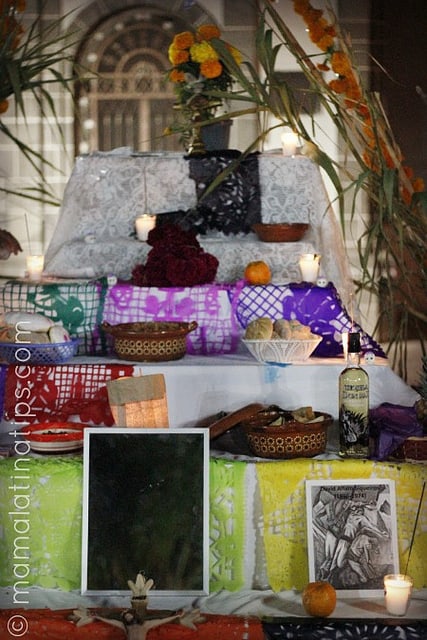Día de los Muertos was this week and as a special treat, I’ve asked some of my friends to send me photos and descriptions of their altars to share here on The Other Side of The Tortilla to show the variety of ways that people celebrate this holiday.
Today, I’m sharing the altar of my friend Silvia Martinez from Mamá Latina Tips.

Where in Mexico are your family’s roots?
My family is from Guanajuato, a beautiful state in central Mexico. Before I moved to the U.S., I don’t recall participating much in the type of Day of the Dead celebrations that have become so popular recently. What we do is this: each year my family goes to the cemetery, with literally thousands of others, to place flowers on the graves of family members and clean up around the grave site. There is usually music and even food—it feels more festive that one might think—and then we go to Mass. Since living in California with my own family, the desire to share this particular part of my culture with my boys has increased. We just spent Day of the Dead in Mexico and it was both fun and fascinating.
How has celebrating Día de los Muertos in Mexico this year been different for you than the way you celebrate it in the U.S.? Have you noticed anything interesting or different than what you remember it being like from when you were growing up in Mexico?
I would love to share something that I haven’t seen before, as it seems to be a new tradition in my pueblo. On the night of November 1st, families go out into la calle (what we call the streets downtown) and kids carry bags and ask for candy just like on Halloween in the U.S., but instead of saying “trick-or-treat,” they say “Mi calaverita” (which means “my little skeleton”). Also, a lot of women dress up as Catrinas, some with elaborate dresses and hats. Catrinas have been a symbol of Day of the Dead for a long time and I think it is just beautiful seeing them embrace and expand on this tradition.
- Share your altar with us! Fill out this form by Nov. 10 to participate and your altar could be featured here.
Leave a Reply